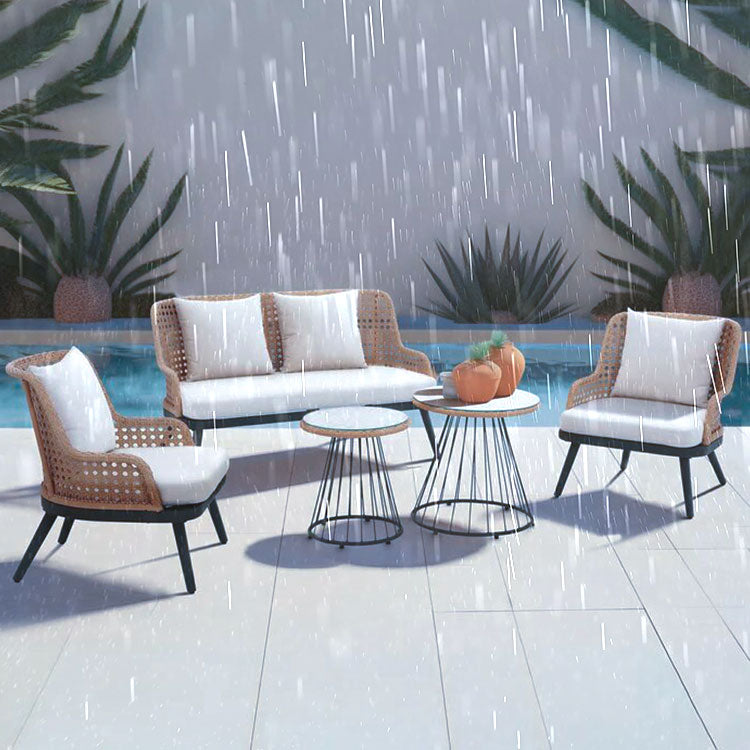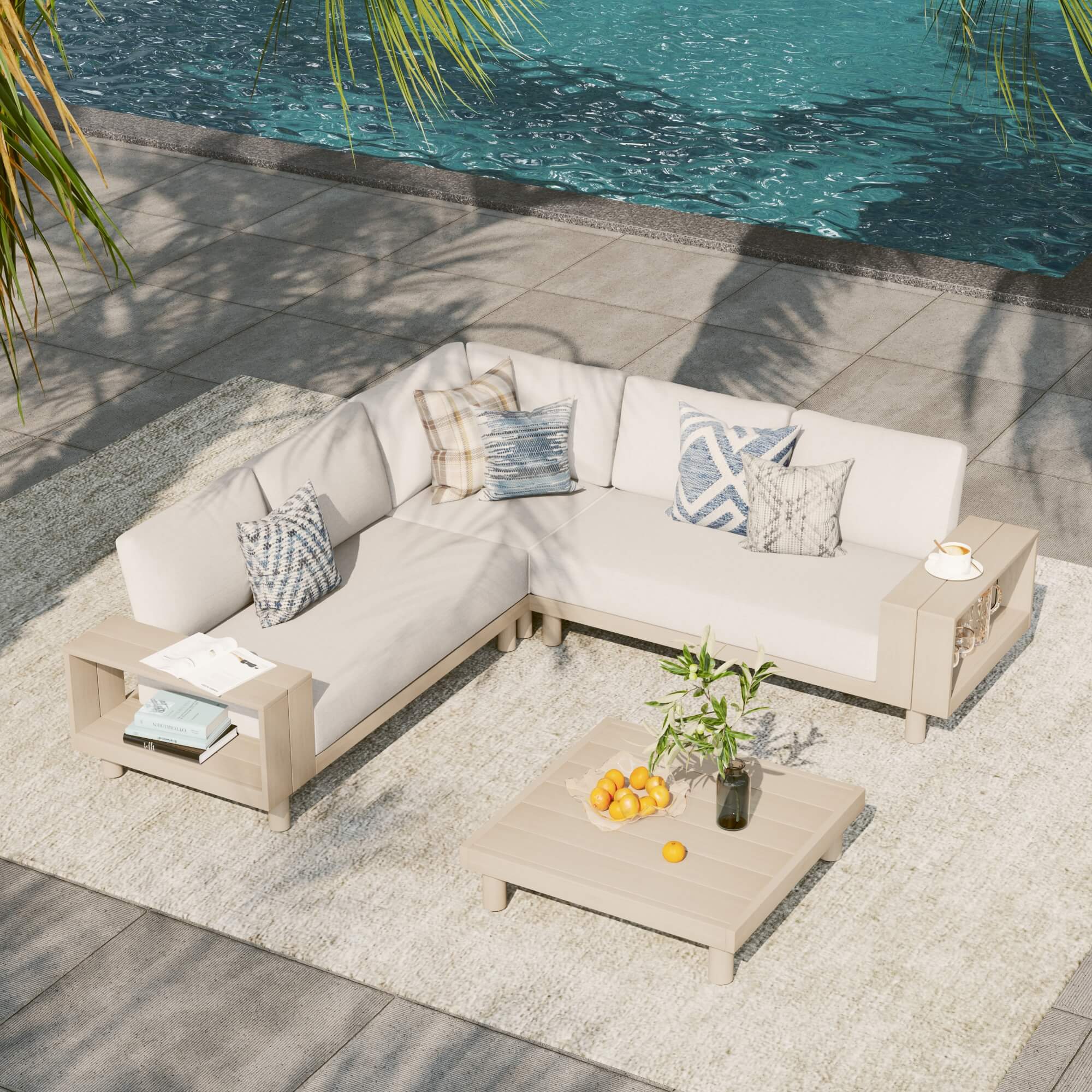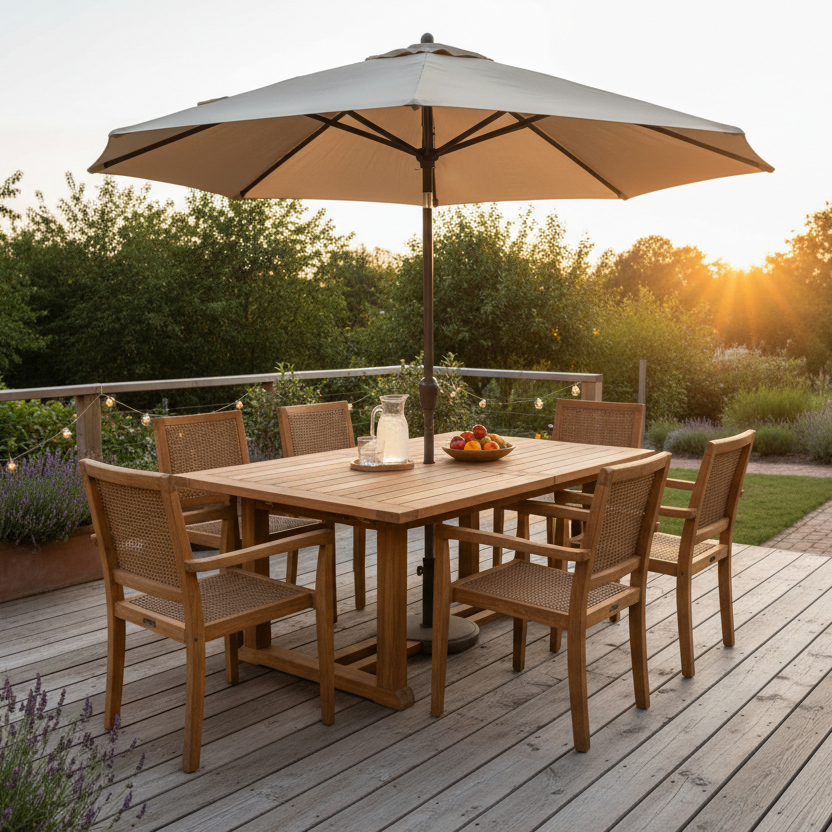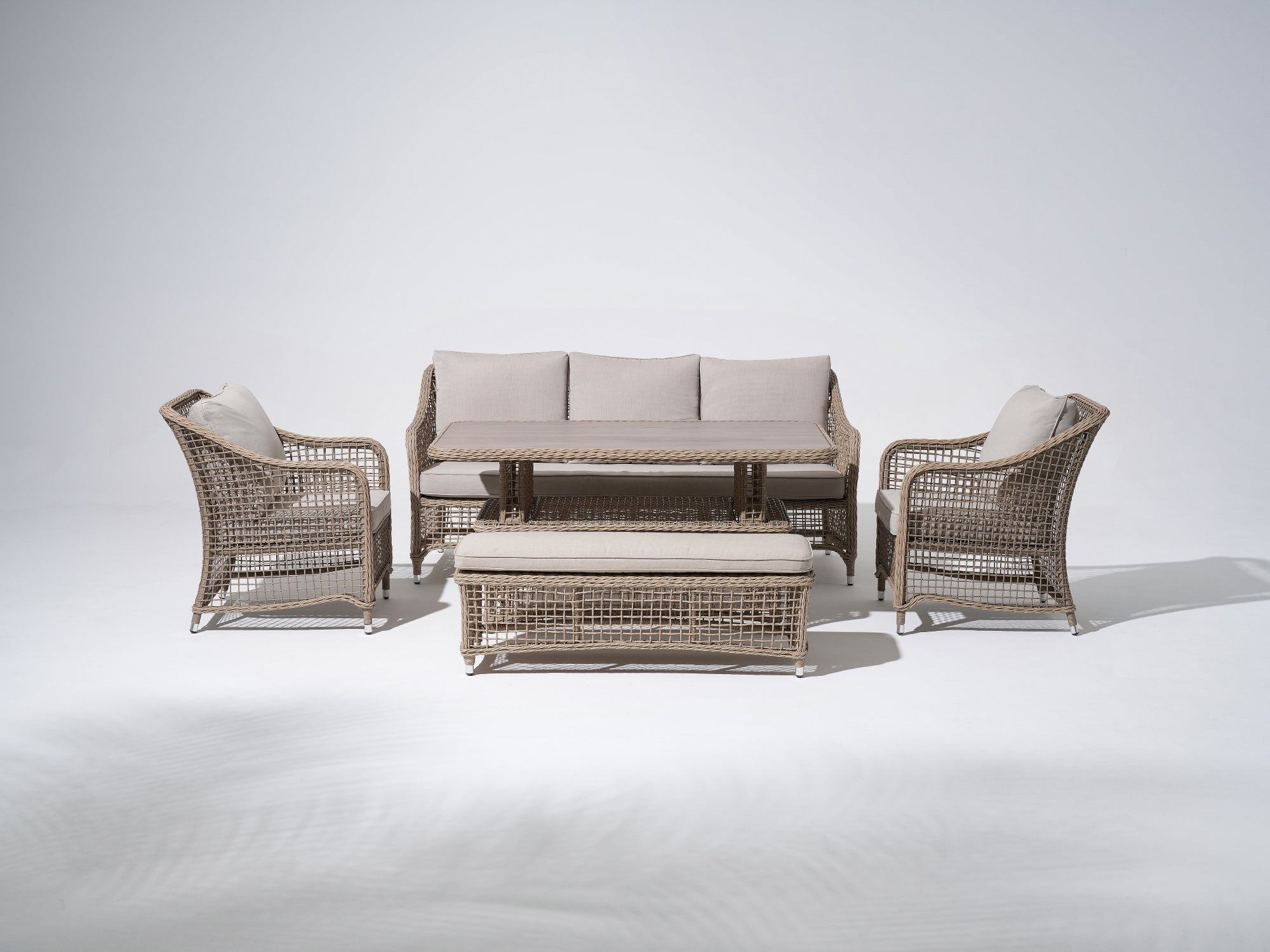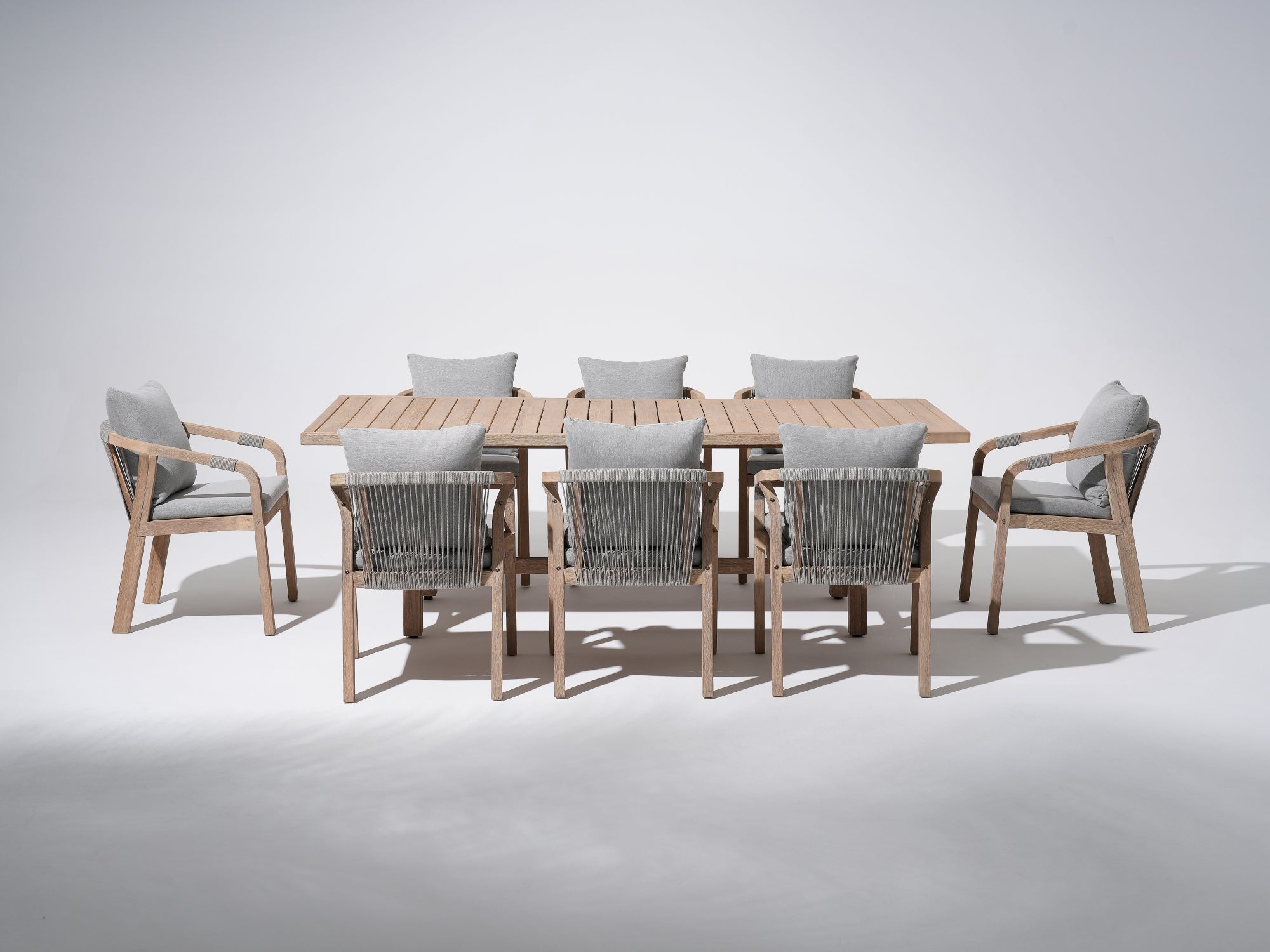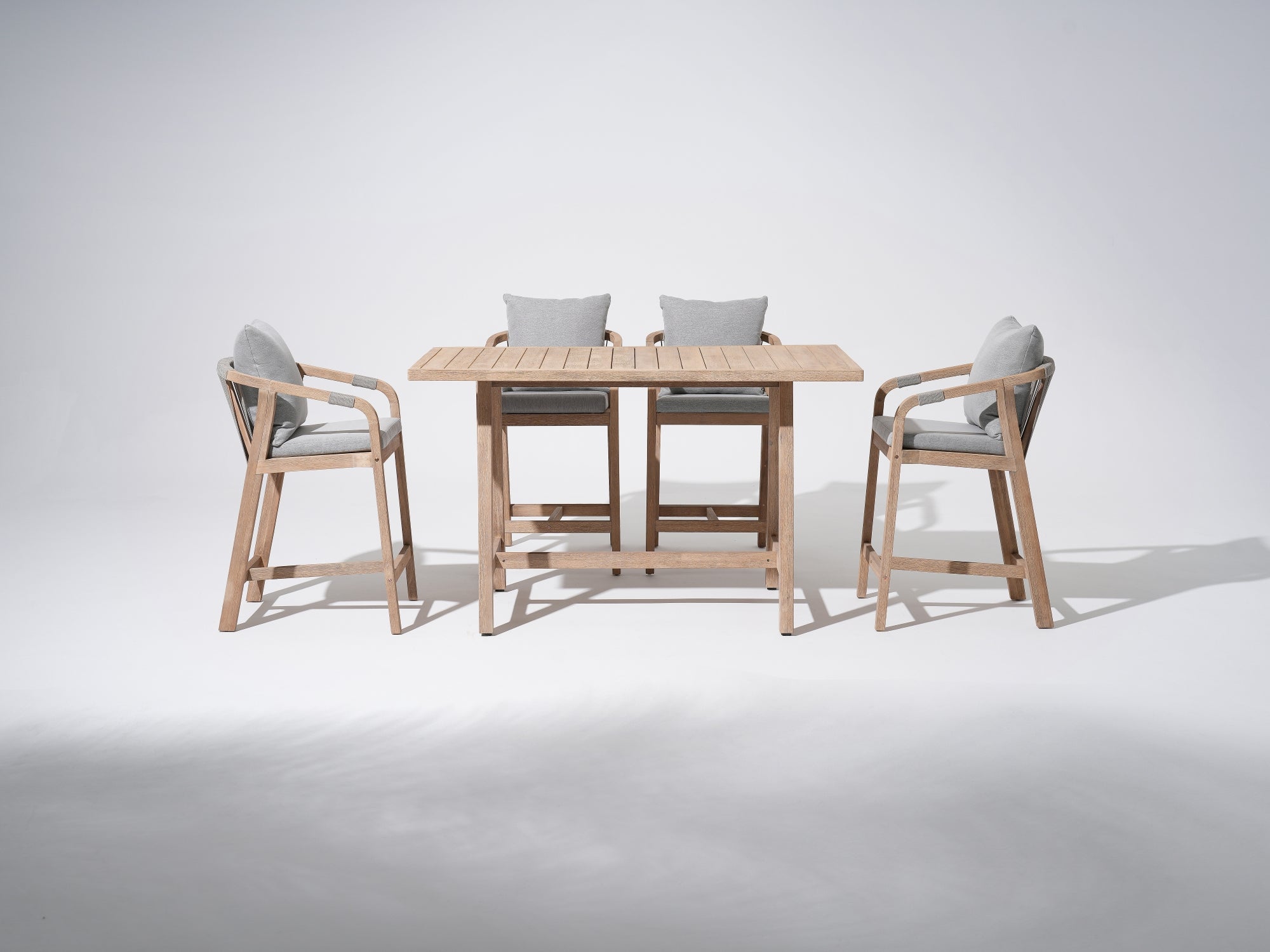Some furniture materials like plastic can handle outdoor rain. But can wicker furniture get wet? Sadly, yes. Such exposure to moisture will damage the furniture. In this article, we will explain what happens when wicker gets wet.
Also, we will compare the water resistance of natural and synthetic wicker. This will help you choose the best furniture for outdoor use. Finally, we’ll see how you can protect your furniture from damage.

What Is Wicker Furniture?
Although many people make this mistake, wicker does not refer to the material. Instead, it is a weaving method. Skilled craftsmen weave fibers from natural plants such as rattan, bamboo, or willow.
You can then shape your weaves to make chairs, tables, and beds. You have likely seen this furniture style. Items made this way are comfortable to sit on. Another reason they are appealing is their looks. Natural wicker furniture helps to beautify homes and business areas.
Wicker chairs and tables have fine aesthetics but are not very durable. For example, the edges can begin to reopen after some time. This damage can be worse when you place the furniture in the garden or patio. Exposure to rain and sun can damage them faster. You can say the furniture was designed for indoor use.
However, synthetic or resin wicker improves on these faults. We make synthetic wicker from high-grade resin or polyphenylene ether. The material mimics natural wicker fibers. It can handle heavy weights like the ones you would place on furniture. Also, it is water-resistant. This means they can serve indoor and outdoor needs.
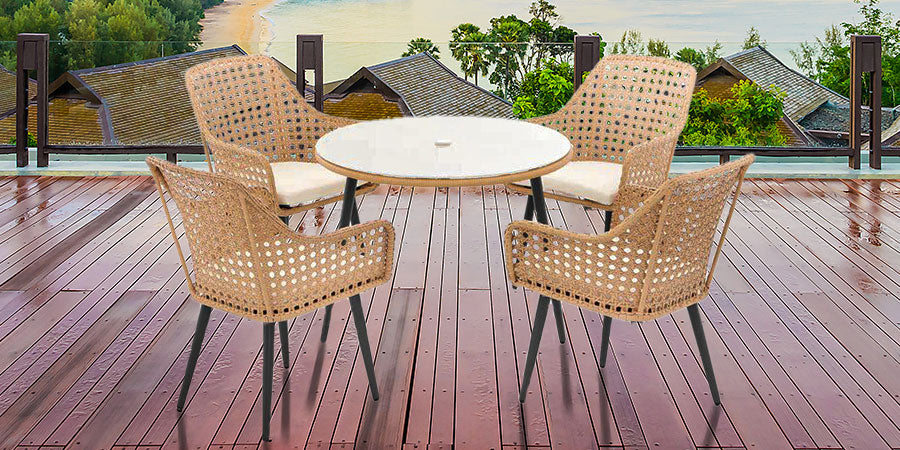
What Happens When Wicker Is Wet?
Imagine a scene where it starts raining, but your furniture is in the open on the patio or business place. Many users must deal with this reality. It's possible to shade the furniture later, but it may have touched water. When this happens, what happens to your investment?
Sadly, natural wicker does not hold up too well in water. Your furniture can become soft and stretch. So, after storing them safely during a downpour, clean up the water spills immediately.
Even small amounts of water can be bad for your furniture. For example, mildew can start to form on the surface. Consequently, the set will look less attractive. With mold or mildew on the furniture, it may develop odor problems. Further, prolonged exposure to water can cause rot and permanent damage.
While resin wicker holds up much better, you shouldn't expose it to constant rain. This furniture is plastic-based and made to withstand water.
In contrast, resin wicker is plastic-based and made to withstand water. Still, we recommend you shield it from heavy rain. We will now discuss the factors affecting water resistance in wicker furnishings.
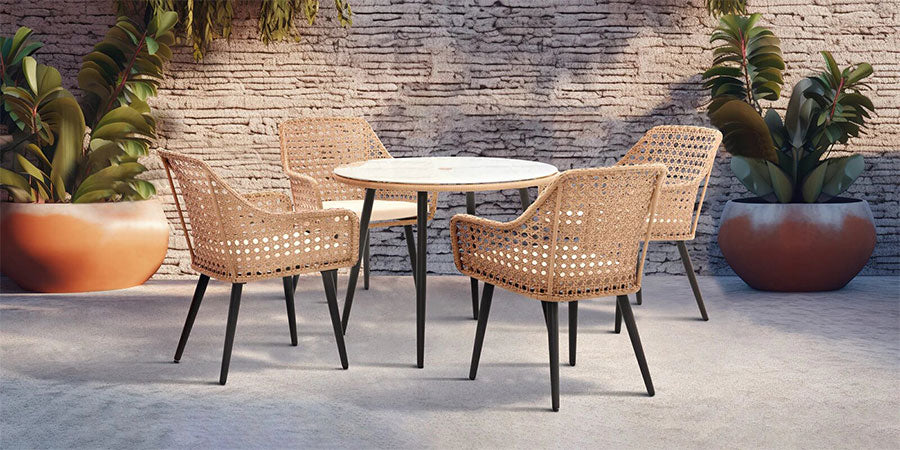
Factors Affecting Water Resistance
As we have seen, natural and synthetic wicker have different water resistance levels. The synthetic or resin wicker is more water resistant. There are at least 3 reasons for this difference:
- Material composition
- Construction techniques
- Finishing and coating
Material Composition
Natural materials like rattan or bamboo offer slight water resistance. Rattan, for example, has dense oils that repel water. However, this property becomes weak if you expose the furniture to wetness for long. However, we design synthetic materials to be more water resistant. As a result, they are less prone to damage by moisture.
Construction Technique
We make synthetic wicker from high-density polyethylene. We fortify the design with metal frames or edges. We then dye the material with ultraviolet-resistant colors. This helps to preserve its color and water-resistant properties. Our customers say the furniture is impervious. Synthetic wicker is chlorine-resistant. So households and businesses can use them by the poolside. This careful production process creates low-maintenance furniture that can last 10 years.
Meanwhile, natural wicker lacks these defenses. So, it’s easier for water to sip into the furniture and weaken the pattern. The furniture slowly comes off afterward.
Finishing and Coating
Finishing and Coating: Applying an outer coating to wicker furniture will improve its water resistance. You can strengthen natural wicker this way. Sealants, varnishes, or waterproof coatings can prevent moisture from entering the furniture. However, reapplying this coating should be continuous. Outdoor furniture especially will benefit from this care
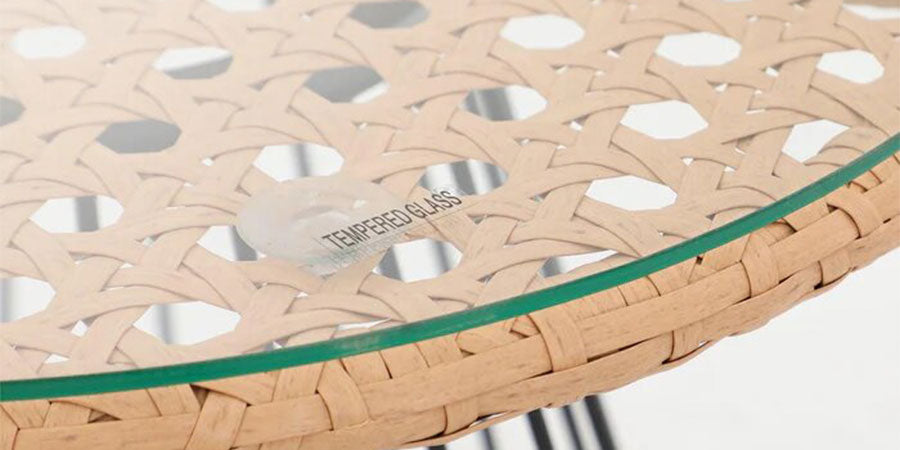
Natural Wicker vs. Synthetic Wicker
Natural and synthetic wicker look alike, but they are different. For example, take the water resistance property. We make resin wicker tough and low-maintenance. Consequently, they are better suited for outdoor use.
In contrast, natural wicker can easily become damaged when exposed to wetness. This makeup explains why natural wicker needs lots of care and attention. Meanwhile, the synthetic ones need minimal attention. In fact, many of our customers prefer resin wicker for its low-maintenance quality.
Synthetic furniture is a good money investment if you will use them outdoors. We have made them with outdoor weather in mind. The weather can be unpredictable, and it may sometimes rain on snow. These conditions can damage natural wicker. Replacing bad furniture sets can cost a fortune. However, you can save costs with synthetic wicker.
Below, we compare the various properties of natural and synthetic wicker:
|
Feature |
Natural Wicker |
Synthetic Wicker |
|
Material Type |
Made from natural materials like rattan or bamboo |
Made from man-made materials like resin or polyphenylene ether |
|
Strength |
Is strong but weakens with time due to moisture and other elements |
Generally more durable and resistant to water |
|
Water Resistance |
Moderate water resistance, weakens when exposed to moisture for long |
High water resistance, does not degrade easily |
|
Maintenance Care |
Needs regular cleaning and occasional sealing or varnishing to maintain appearance and quality |
Low maintenance; can be cleaned with soap and water |
|
Environmental Impact |
Generally eco-friendly since it uses degradable natural materials |
Can be eco-friendly since they last longer |
|
Design Options |
Fewer design options due to limitations from the natural process |
You can order them in range of colors and designs |
|
Weight |
Lighter when compared to synthetic wicker |
Slightly heavier, for more balance |
|
Inside/Outside Use |
Best used indoors or in covered outdoor areas |
Great for indoor and outdoor use, including exposure to sun or rain |
|
Price Range |
Is more expensive due to the use of natural materials and craftsmanship |
Is more affordable due to lower production costs |
|
Lifespan |
Has a shorter life span when exposed to harsh weather or frequent use |
Can last up to 10 years of constant use |
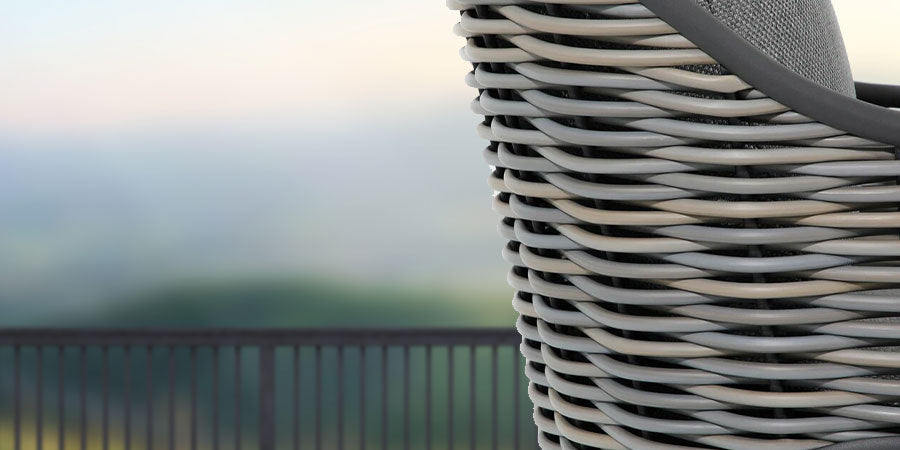
Tips for Protecting Wicker Furniture from Water Damage
When well maintained, your furnishings can last several years. So, it’s necessary to clean and maintain wicker furniture. But how can you do so without causing any damage?
Cleaning and Maintenance Guide
Wicker furniture is tough to clean. Its tiny spaces can host dirt. Still, you should clean it regularly. This way, your furniture will last long and look good. Generally, you should follow these steps when cleaning wicker:
- Decide the type of wicker you are cleaning. Natural and resin wicker have different cleaning methods.
- Determine the best method for your type of furniture. This will help you avoid damaging the furniture.
- After cleaning, dry the wicker with a fan or outside in the sun. Avoid leaving the wicker wet for too long outside.
Here is a step-by-step guide for cleaning wicker:
#1 Vacuum the Wicker
Vacuuming is suitable for all types of wicker. It's the first step when cleaning your furniture.
#2 Use a toothbrush
You can scrub the furniture with a toothbrush to remove dirt or dust. But be careful to avoid overly scrubbing the furniture. Otherwise, you will scrape off varnish as well. This step is suitable for all types of wicker. You can dip the toothbrush in water when cleaning natural or synthetic wicker.
#3 Trim with scissors
Natural wicker can have strands that stray and stick out. Do not pull the stray piece if you have this kind of furniture. This action can cause more damage. Instead, trim with scissors or a knife. It’s the same way you’ll cut loose thread from clothing.
#4 Wipe with water and mild detergent
When outside, you can spray synthetic wicker with a hose. But if you are indoors, you can use a bucket and cloth with mild soap to clean the furniture. Natural wicker may have been painted, so use care when cleaning so the paint doesn't come off. After cleaning, rinse the furniture thoroughly. Allow it to dry before using it again.
#5 Dry with a fan or in the open air
You have successfully cleaned your furniture. But you should let the water dry before using it again. You can dry wicker in the open air. Alternatively, you can use a fan or hair dryer for this process. successfully
Storage Guide
Sometimes, your furniture may be in disuse and may need storage. There are a few tips to help you do so correctly:
Store Indoors
When it rains or snows, you should store the furniture inside. This will protect it from moisture and humidity. Choose a dry area in the house to store used furniture. This will cause the appearance of mold.
Avoid Wet Floors
Place the furniture on a dry surface. This way, moisture from the ground won't get wet or damp.
Use Furniture Covers
You can use furniture pads to protect the pieces further. Put these pads under the legs of wicker chairs and tables to prevent direct contact with wet areas.
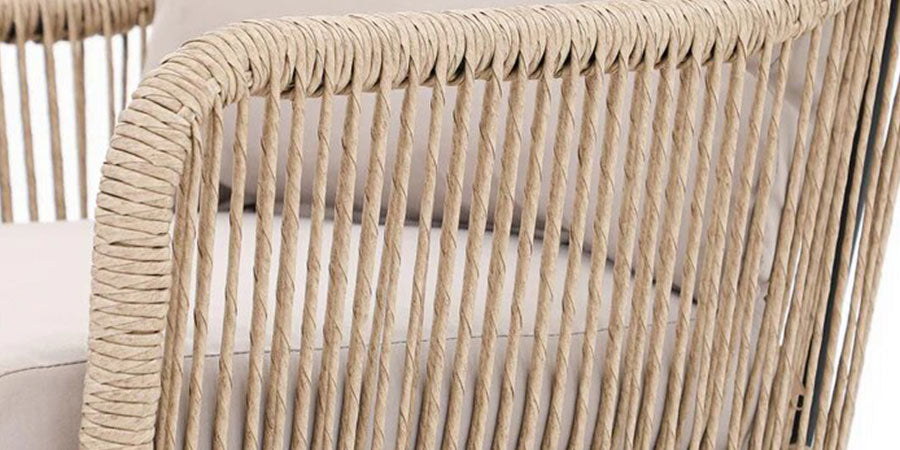
Real-life Scenarios and Solutions
When buying outdoor furniture, there are a few points to consider. The material type is the most important. Synthetic material can serve your outdoor needs. Also, you should buy furniture with a protective coating. Most manufacturers coat their pieces of furniture when making them.
Repairing Water Damage
Maybe by accident, you left your furniture in the rain by accident. How can you fix this situation? First, remove any cushion so it can dry properly. Next, check the furniture for mold. If you notice any, clean the wicker surface with water and soap. Cut loose strands of furniture with scissors. Finally, you can recoat with a sealant or spray to fortify the furniture.
FAQs
Is wicker waterproof? Can wicker get wet?
Natural wicker furniture is not waterproof. The furniture can absorb moisture if you leave them in the rain. Water damages your wicker furniture. So, many people use them indoors or in shaded outdoor areas. But resin wicker is plastic-based. So the material resists water.
Is resin wicker toxic?
Resin wicker is made from polyethylene or polypropylene. This material does not contain harmful chemicals. So you can relax on them without worrying about your health.
Is it wicker wood?
Natural wicker is made from fibers of plants like reed, rattan, or bamboo. Woven fibers look like wood but are plant fibers.
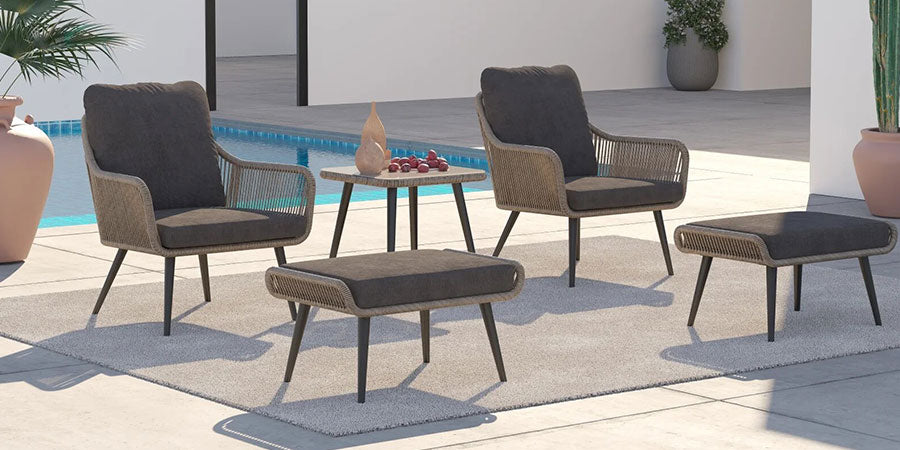
Conclusion
You should keep natural wicker furniture away from water. But if you must use outdoor furniture on the patio, sidewalk, balcony, or poolside, resin wicker is the way to go. This synthetic furniture is highly water resistant and can withstand outside elements.
Our synthetic wicker has the same elegance and comfort as natural ones. So you'll get full value for your money. Order resin wicker furniture today.


